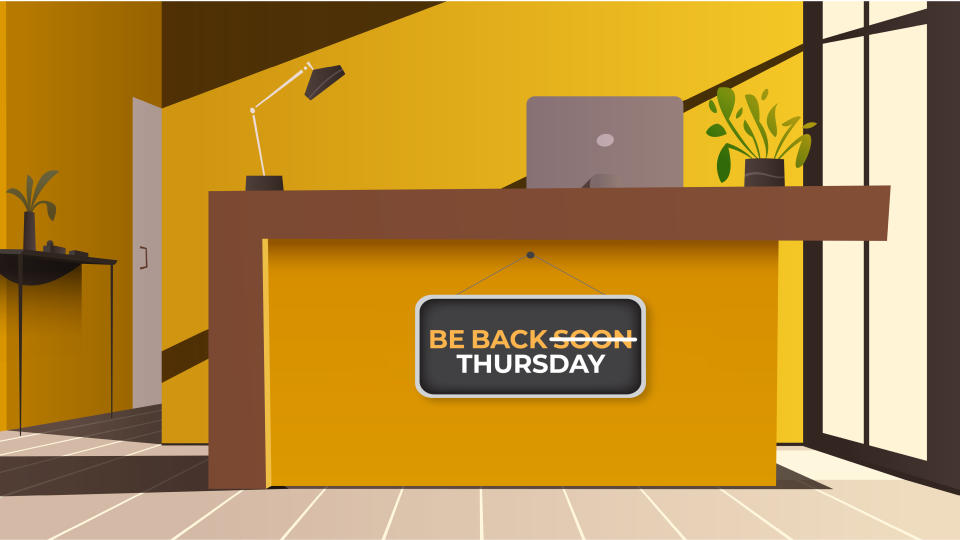Viewpoint: Evaluating the Office Space Identity Crisis

The office space isn’t dead, but it is going through an identity crisis—and we will likely spend the next two years witnessing its complete metamorphosis. While I have yet to see predictions of economic calamity coming from the market analysts and economists that track the commercial real estate sector, it is clear that the status quo will continue to adapt as we figure out what to do with all of this empty space.
[Viewpoint: Exploring the 5 Pillars of the New Workplace Paradigm]
While many companies have implemented in-office mandates, I have heard of very few that that are requiring an in-person presence for five days per week. My anecdotal survey of industry peers suggests that we are all hovering around a 30-40% peak office census relative to employees assigned to a given space.
Earning the Commute
With office vacancy rates hitting record highs, according to Moody’s analysis, it is clear that companies are scaling back their office footprints and reevaluating current and planned investments in physical space to cope with the changing work styles and habits that are in demand among knowledge workers. As a result, corporate real estate professionals that manage these spaces for companies large and small are still struggling to make the office make sense, because the appetite to invest remains low given the scope of change required to transform these spaces to suit the modern workforce.
One thing that we can likely all agree on is that the space that we built five years ago no longer fits the needs of the organization that we are now. In years prior, this might have meant some new paint, carpet, and furnishings to spruce up a dated office space. But today this space needs much more in order to draw employees back in and earn the commute.

The drawback to the office revolves around collaboration and connecting with your colleagues. While free coffee and food are great, I haven't heard of many colleagues willing to sit in traffic to enjoy a coffee while sitting on video calls all day.
What I have heard quite consistently is that they are coming to the office to be around other team members and foster those human connections that are crucial for emotional connection to the meaningful work we all pursue. To that end, it is important that we create welcoming and inviting spaces that support the psychosocial ties to a team, department, and broader organization that are really hard to develop.
[SCN Hybrid World: Videobars Offer Simplified Conferencing Solution]
Simultaneously, that need for connectedness to your colleagues still needs to account for those that can't be in the office with you on that day. Solving that part of the equation tends to fall on the shoulders of technologists who need to expand the reach of wireless networks, enable local egress of internet connectivity, and update collaboration spaces.
These activities are all necessary to fit out the space that we need, but a true accounting of value added to the organization for these investments remains elusive. As a result, many organizations are still in a wait-and-see posture. After all, if it doesn’t appear to be overtly broken at the moment, why fix it?
Coming Soon: True Insights
Many organizations lack the data collection and analysis tools that would guide that decision calculus, and that is where investments today would yield the most benefit in the near future. A former CIO with whom I worked would inevitably ask “Where is the data?” in every meeting that required a decision from him. There are many of us that are unable to provide that data at present because we don’t have the tools to collect it. The good news is that we are also in the middle of a transformation in technology that is enabling tools that we have today to give us the information we need to demonstrate a return on investment in office space transformation.
This metamorphosis of the physical office space will require proper planning among corporate real estate, IT, and human resources professionals to truly influence overall workplace design.
There is promising technology coming from all areas of the Pro AV landscape that will leverage artificial intelligence to provide all sorts of insights into how our space is really being used and what we need to do to make it better for our colleagues. I’m excited about the promise of people counting, voice and facial recognition, and integration with productivity platforms.
However, I’m excited not just because these technologies will enable more immersive and frictionless collaboration experiences from the workspace, but rather these technologies will give us meaningful insight into our respective work habits and productivity. From there, we can be a lot smarter about how we invest in our respective organizations and really start to define what the office space needs to be.
For example, video systems that count people actually in the room can tell us what our peak usage hours really are without having to comb through room booking data in the hopes that people actually showed up to those meetings. Also, when similar insights into environmental conditions are paired with machine learning and predictive analysis, we can make recommendations to our colleagues about which parts of the building may be best suited to host that meeting based on the size of party, length of meeting, or other data pulled from the meeting invite. As this loop of data feeds itself, we are able to make better space planning decisions—but also make better real-time usage decisions that better approximate the curated experiences that we have created for ourselves at home.
This metamorphosis of the physical office space will require proper planning among corporate real estate, IT, and human resources professionals to truly influence overall workplace design. Convergence of the physical and virtual workplace is the future—there is no going back to the days of physical presence for the sake of physical presence.
We have a responsibility to continue to merge our datasets to provide that complete picture of current and predicted work habits so we can justify the transition that we all know is necessary. The office space is still trying to work through its identity crisis. We need to leverage all the tools available to help us decide what the next phase ultimately will be.

